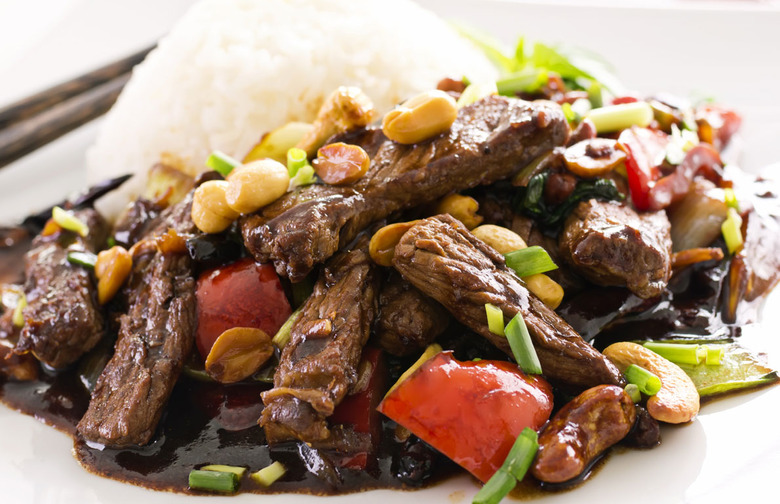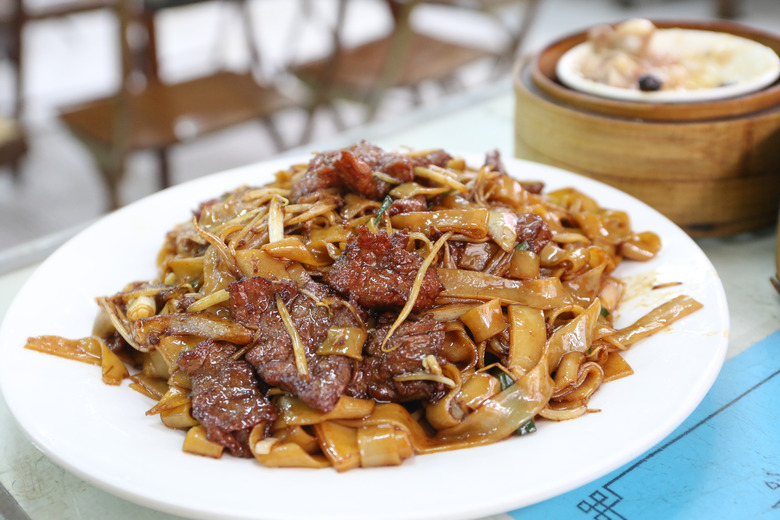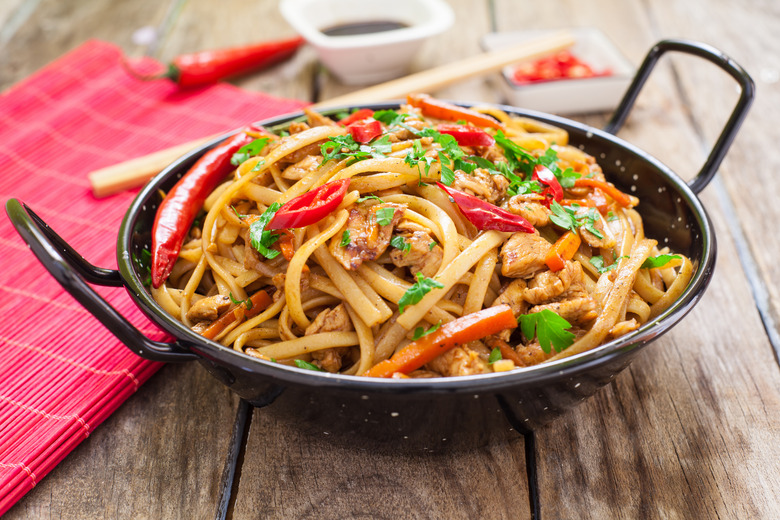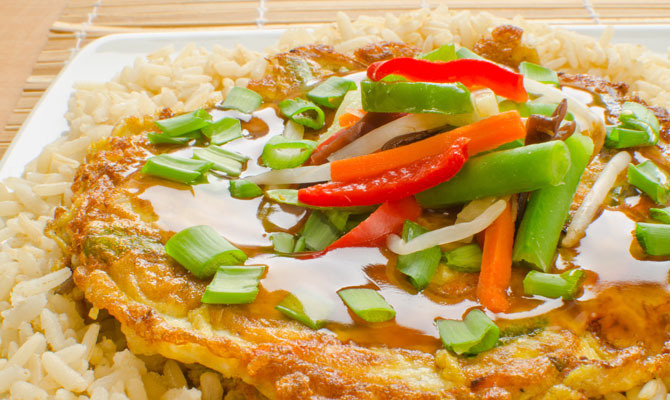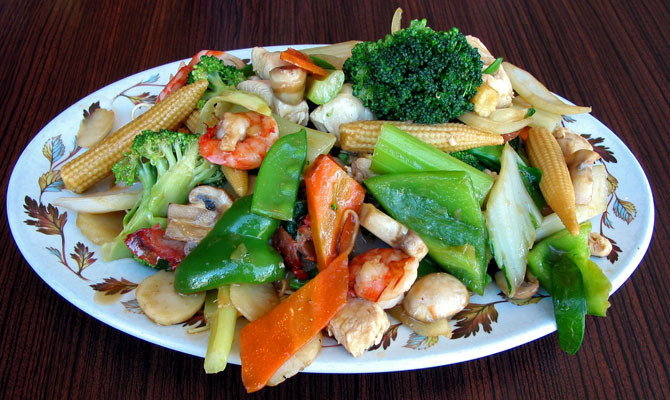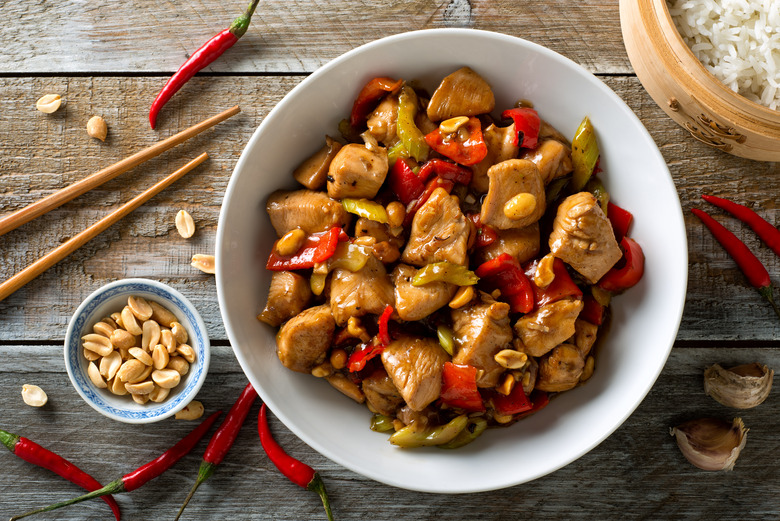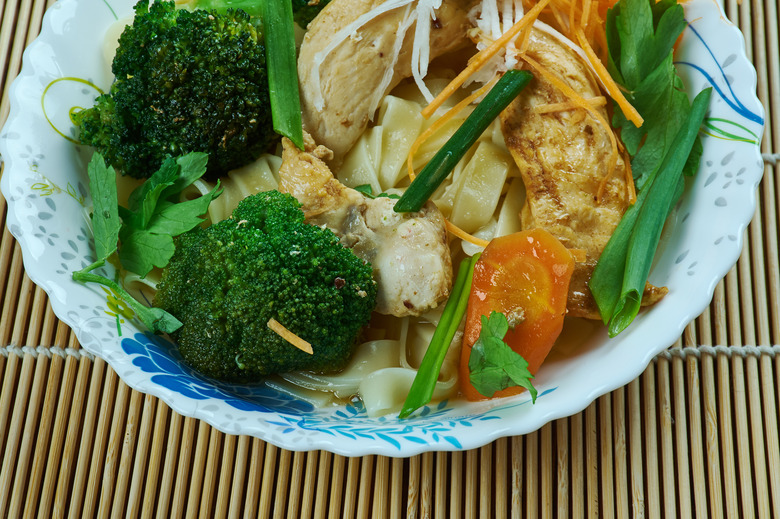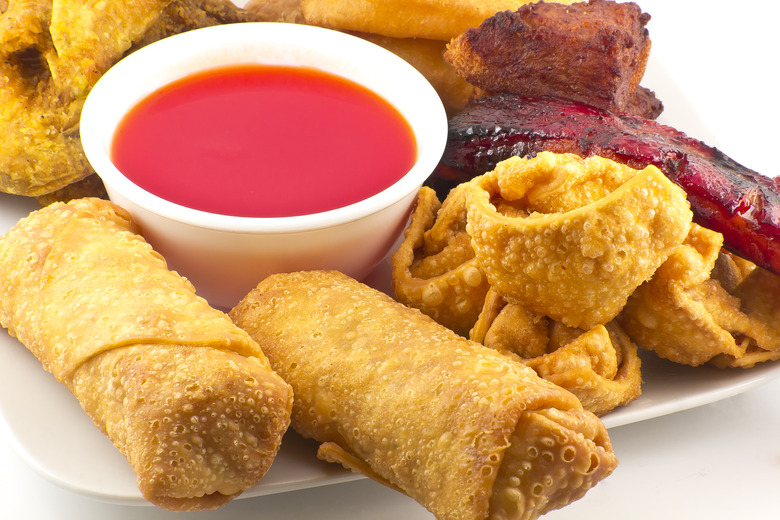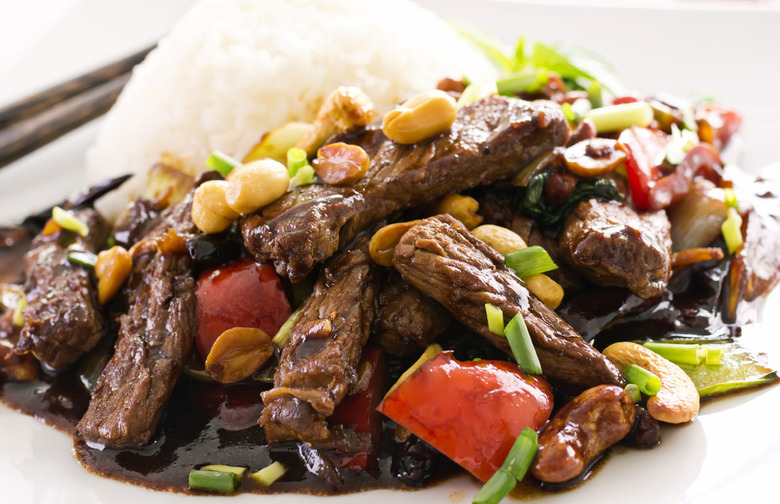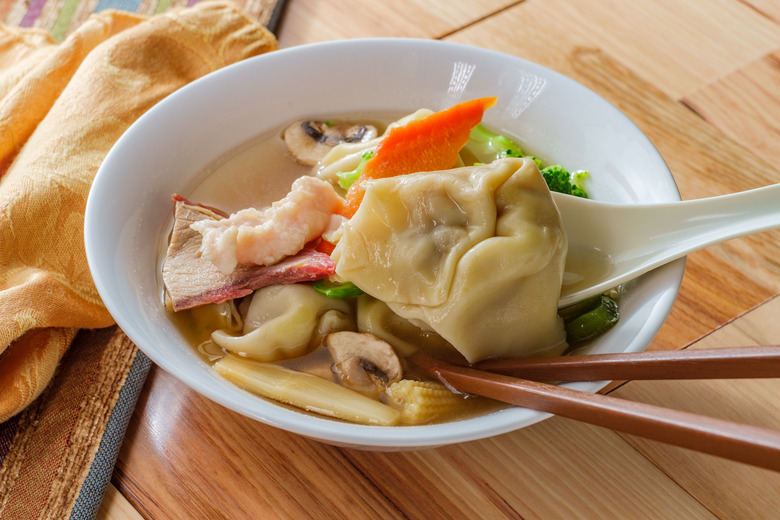Moo Goo Gai Pan And Other Mysterious Chinese Menu Items, Explained
When we order what passes for Chinese food in this country, we tend to stick to a handful of familiar items. Sesame chicken, beef with broccoli, wonton soup ... there are a dozen or so specialties that just about everybody orders, and for most of us the other items on the menu remain a bit of a mystery. Well, we're here to demystify them for you.
Chow Fun
This staple Cantonese dish gets its name from the noodles involved, which are called ho fun. They're wide and flat, with a chewy texture, and usually paired with a protein (beef chow fun, chicken chow fun), bean sprouts, onions, and occasionally other mixed vegetables, all cooked in a wok with soy sauce over high heat.
Chow Mein
Chow mein translates to "fried noodles" in the Taishan dialect of Chinese, and that's exactly what they are. When you see chow mein on a menu, it usually implies that the dish will consist of noodles, meat (there's usually one indicated), onions, celery, and occasionally other vegetables, mixed with soy sauce; it's occasionally synonymous with lo mein. There's also crispy chow mein, which is primarily composed of fried flat noodles topped with a thick brown sauce. When you're ordering, ask whether it's steamed or crispy so you know what you'll be getting.
Egg Foo Young
Egg foo young is essentially an omelette. When you order egg foo young, you'll receive a big egg patty with a wide variety of add-ins embedded within. There are almost always onions, but you might also find carrots, bean sprouts, cabbage, water chestnuts, mushrooms, and meat, if you'd like.
Happy Family
"Happy Family" generally appears in the "Chef's Specialties" section (or something similar to it), and is usually one of the most expensive items on the menu. All it really implies is that there will be a variety (a "family") of proteins — traditionally all the ones that the restaurant offers. You'll most likely receive chicken, beef, shrimp, and possibly other things, like roast pork, duck, scallops, and/or lobster, sautéed with mixed vegetables and tossed in a brown sauce. It's essentially the kitchen sink.
Kung Pao
This is a classic Szechuan dish that's traditionally made with chunks of chicken stir-fried with peanuts, spicy chile peppers, and vegetables that can include scallion, green peppers, and bean sprouts. These are cooked with a sauce that typically includes orange juice, ginger, garlic, chicken broth, and sugar, and garnished with more peanuts.
Moo Goo Gai Pan
Moo Goo Gai Pan is a lot simpler than its name might suggest: it's typically just sliced or cubed chicken (gai pin in Cantonese) with button mushrooms (mohgu in Cantonese) and a variety of other vegetables, usually including bamboo shoots, snow peas, water chestnuts, and Chinese cabbage. These are all sautéed and tossed in a mild white sauce.
Moo Shu
This Chinese-American staple has its origins in Northern China, where a stir-fried dish consisting of sliced pork, scrambled eggs, mushrooms, and daylily buds called mù xũ rōu is still served. In the United States, it's typically made with pork or chicken, egg, bok choy, wood ear or shiitake mushrooms, and celery, sliced into long strips and sautéed in a slightly peppery sauce. It's eaten wrapped in thin pancakes along with some hoisin sauce, and is traditionally the only item on the menu served this way — though some menus also offer mu shu vegetables.
Pu Pu Platter
A standard at Tiki restaurants in the mid-twentieth century, the pu pu platter, which can trace its origins to Hawaii, didn't take very long to find its way onto the menu at a lot of Chinese restaurants. It's a big platter with a variety of mixed appetizers that can include items like egg rolls, spare ribs, skewered beef, fried wontons, crab Rangoon, and fried shrimp. There's also usually a small hibachi grill in the middle of the platter, but it's generally just for show.
Sha Cha
Sha cha (occasionally sa cha) is typically made with beef, and takes its name from a Chinese condiment called shacha sauce, made with garlic, shallot, chile, brill (fish), and dried shrimp. When ordered from a Chinese-American restaurant, what you'll receive can vary greatly: thinly sliced beef that's been sautéed with a sauce that may or may not resemble authentic shacha sauce will typically also be mixed with one or more vegetables, and it's occasionally served alongside rice. If you're thinking of ordering it, we suggest you ask what's in it first.
Subgum
Sap gam, the root of subgum, translates to "numerous and varied" in Cantonese, and when it's on a Chinese menu (usually in soup or chow mein) it simply implies a variety of vegetables and proteins.
